![]()
| The Chernobyl Museum |
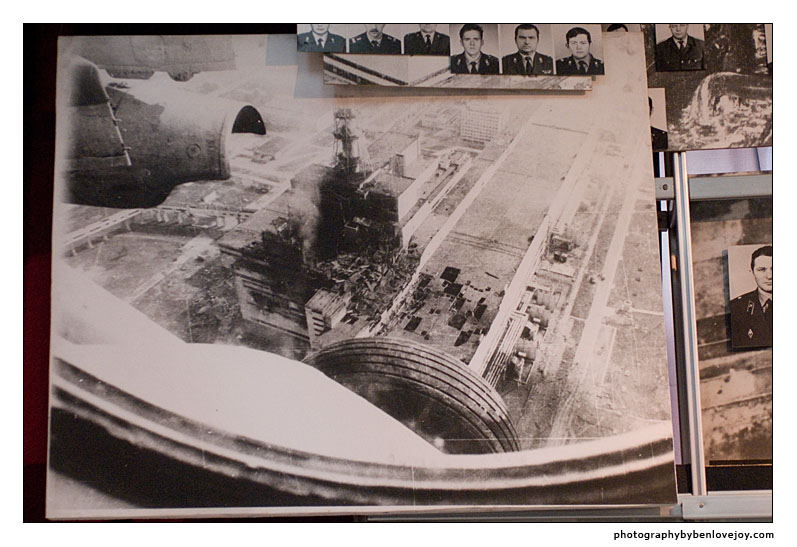
| The Chernobyl Museum is two rooms in a building in a side-street close to the Kontraktova Ploscha metro station (from the barrier, turn right and right again; straight ahead to the street; turn left; first right; first left; and the museum is on your left, with the emergency vehicles outside) It comprises two large rooms. A peculiar challenge faced by the museum, of course, is that it cannot include any objects from the site of the disaster. A very low-tech display shows drawings of the reactor hall after the explosion:. |
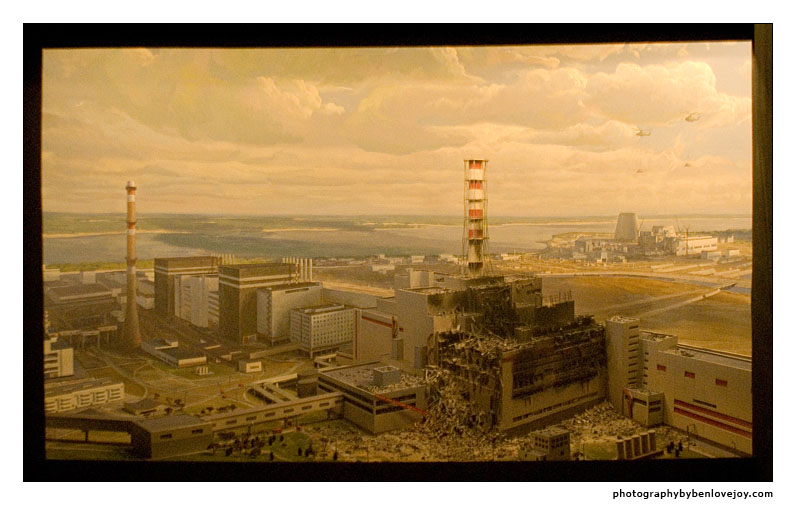
|
and after the concrete sarcophagus was built: |
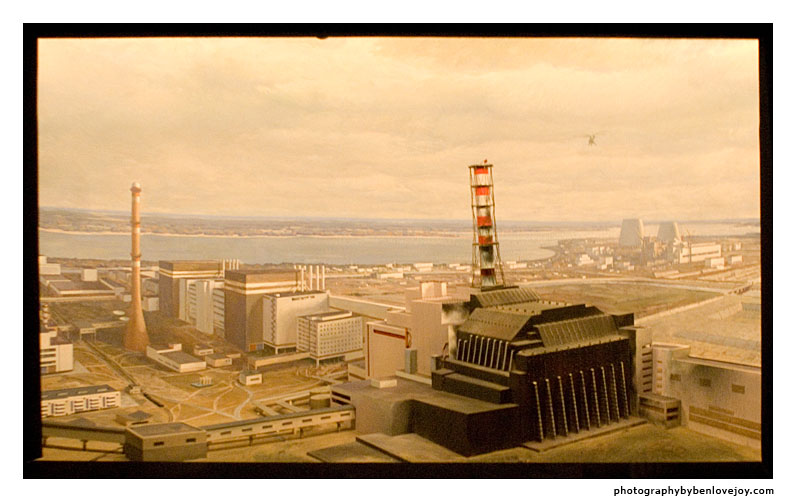
|
The museum is in large part a memorial to the reactor workers and firemen who died - 56 of them soon after the disaster, around 100 more later. Two were killed in the explosion itself, the rest died from acute radiation poisoning. |
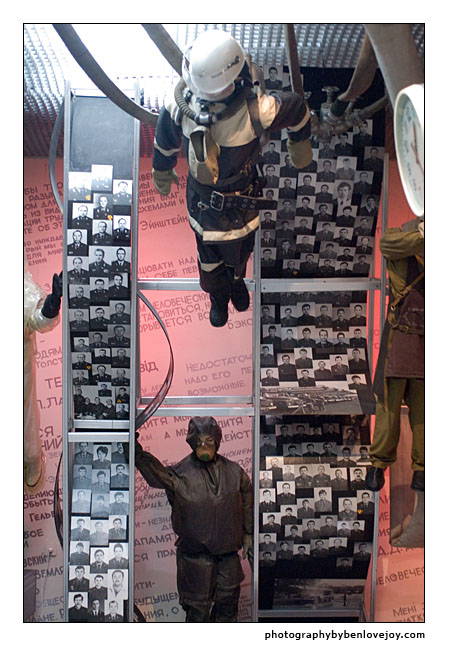
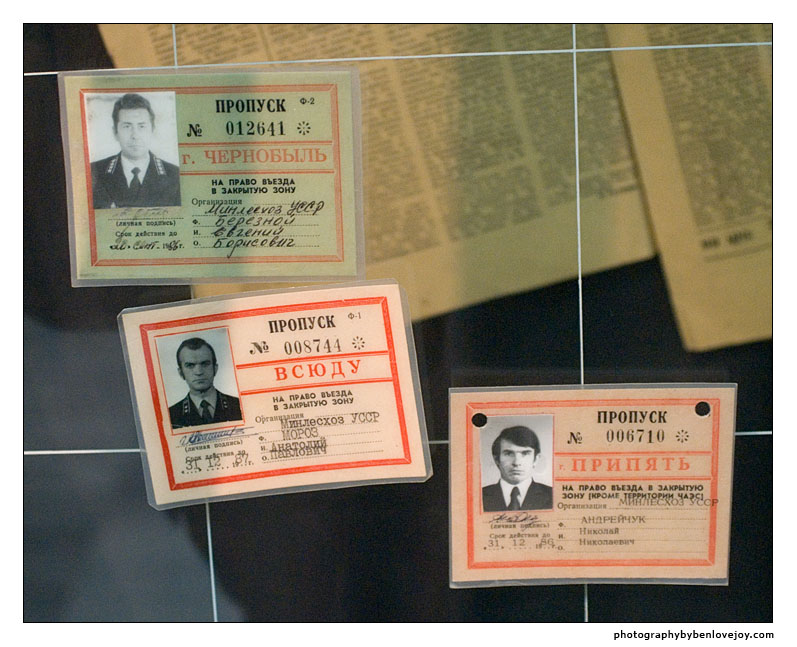
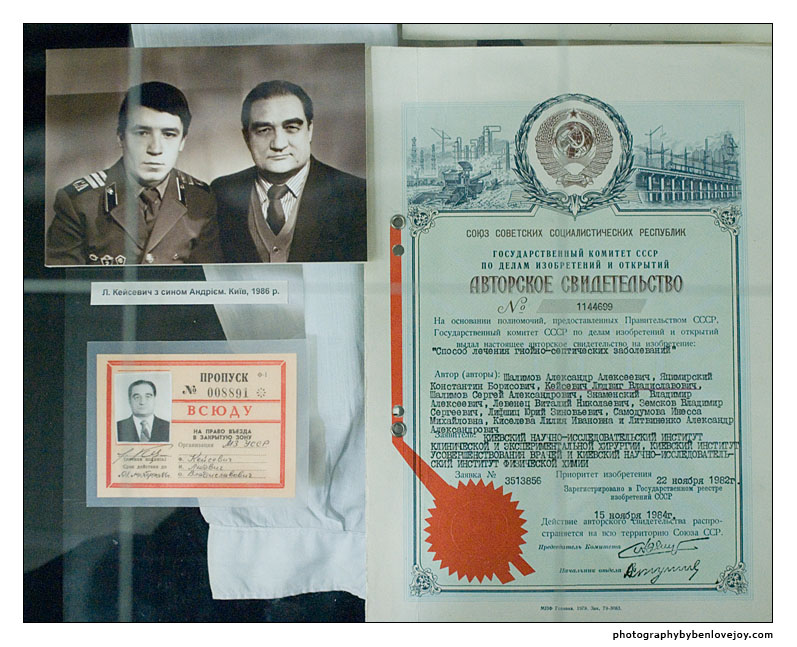
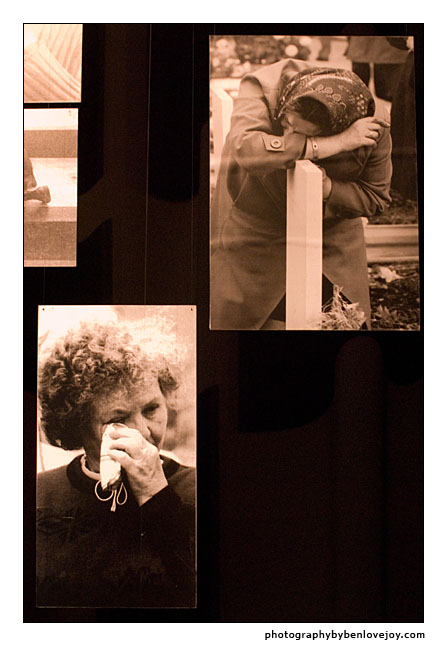
|
The protective clothing and equipment they had was incredibly crude: |
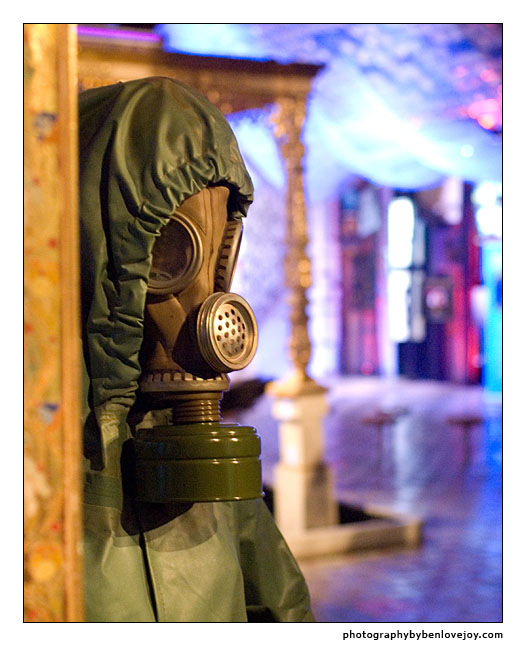
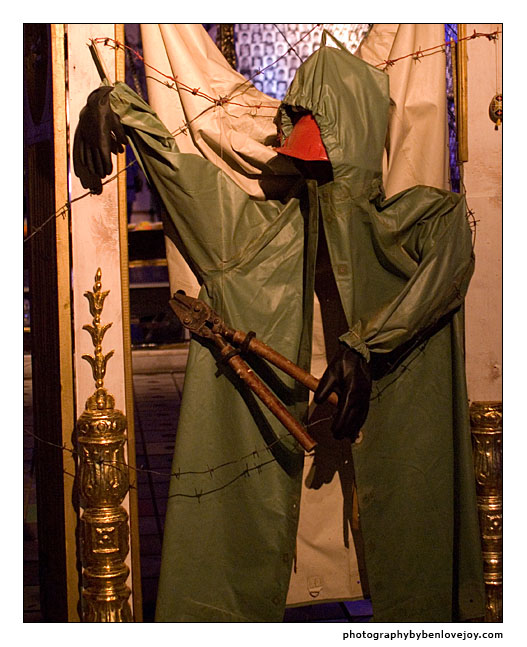
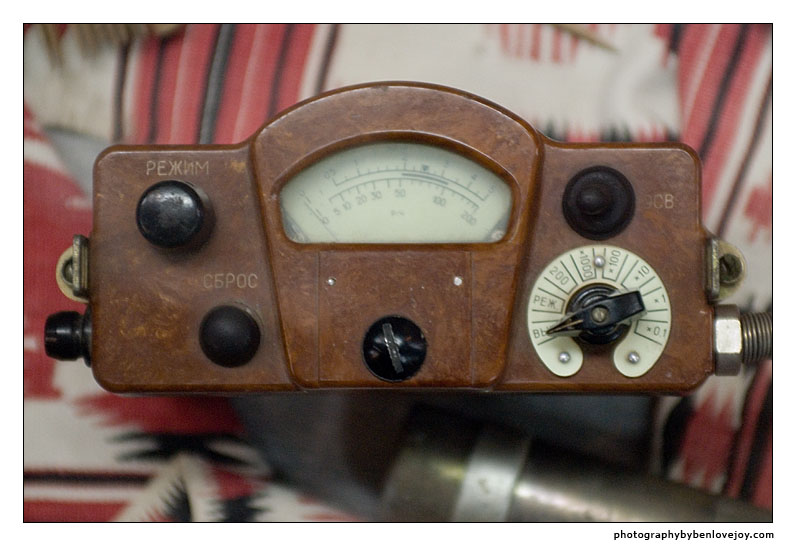
|
It's doubtful that many of these men realised the level of risk to which they were being exposed:: |
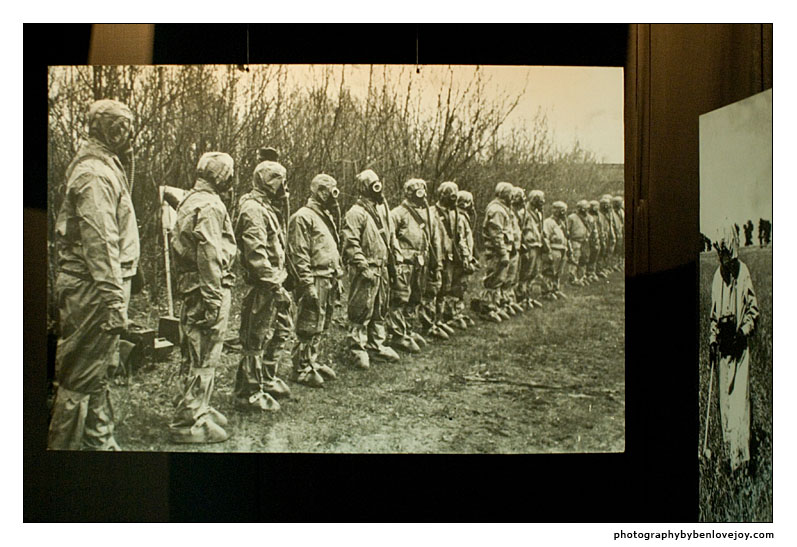
|
The trucks, fire-engines, bulldozers, etc, used all became so highly radioactive that they had to be abandoned on-site. For many years, they sat in a field quietly rusting away, but when the rust particles started to be picked up by the wind and spread, the decision was taken to bury them: |
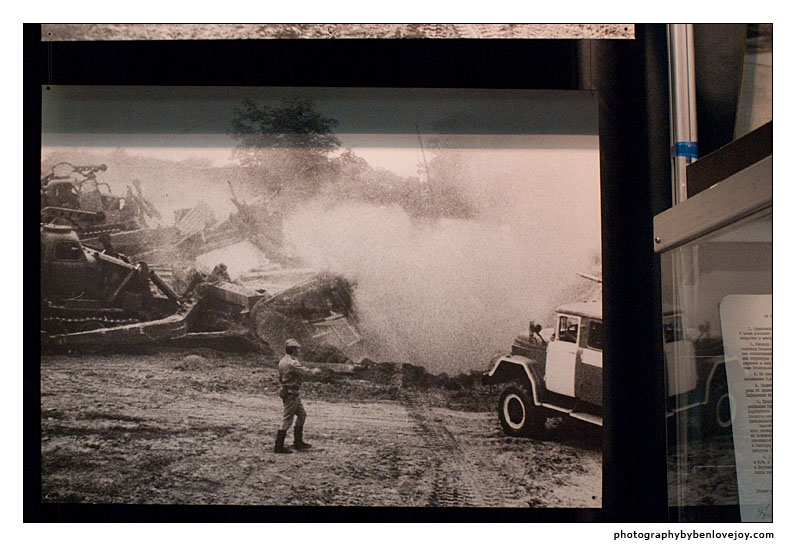
|
Some of the less scruplulous companies leading guided trips into the Zone still show visitors what they claim to be the vehicles, despite the fact that the original ones are now underground. One room has photos of some of the children who lived in Pripyiat, the town of 50,000 people just a short distance from the reactors: |
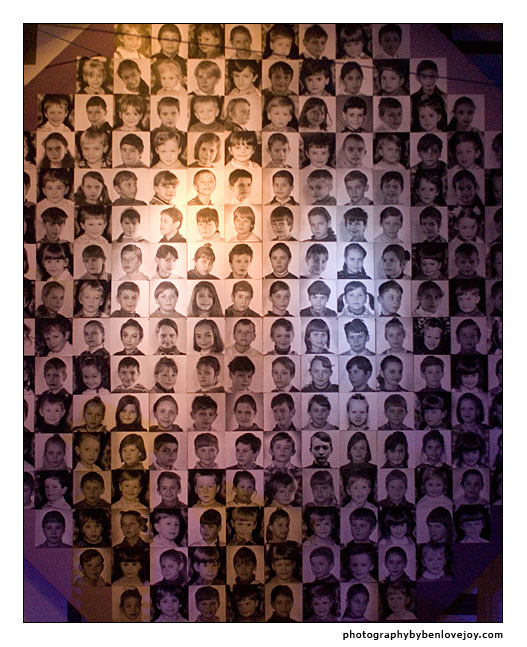
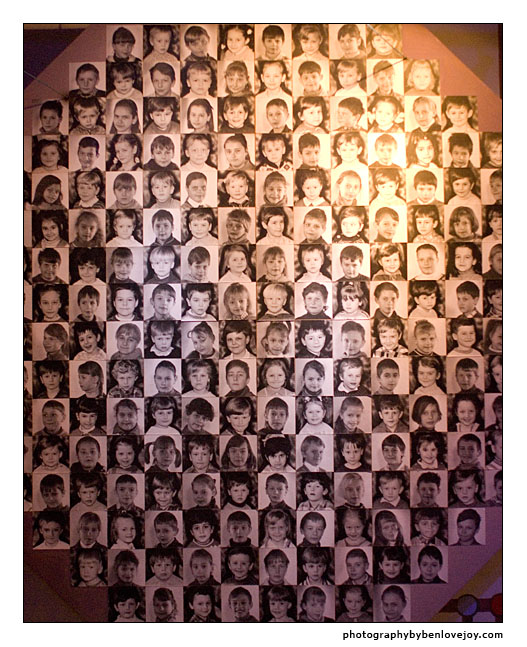
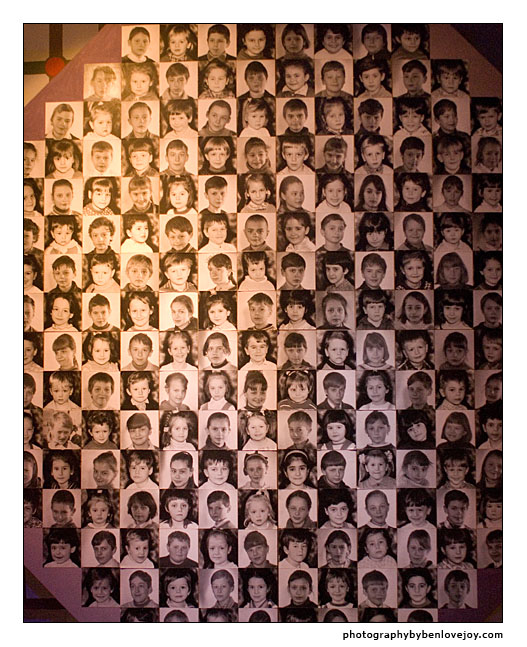
|
Although Pripyiat was the largest habitation in the Zone, it is far from the only one. As you exit the museum, you pass a series of crossed-out place signs, representing all of the villages which had to be abandoned:: |
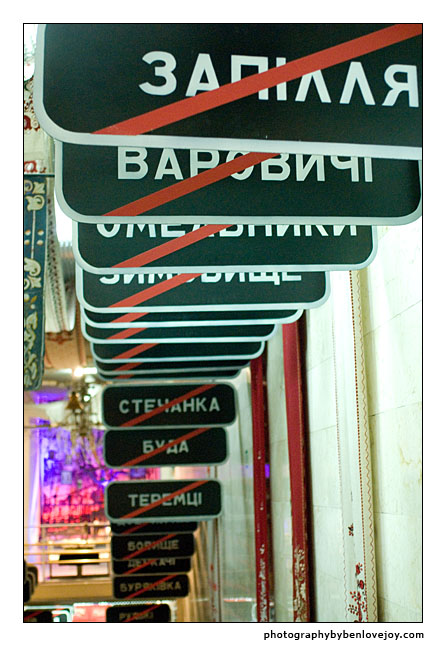
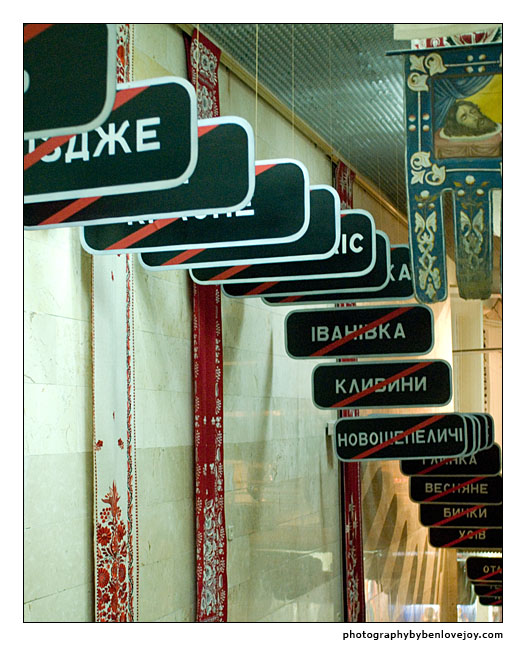
|
Over 180 villages had to be abandoned, around half in each of the Ukraine and Belarus. |
![]()